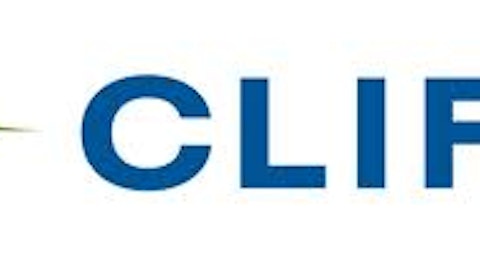Sulfate of Potash
CMP’s sulfate of potash (SOP) business is also unique. CMP’s solar evaporation pond complex in Utah is one of only four in the world (and the only one in North America) that can produce SOP from a naturally occurring brine source using solar evaporation. This production method has the lowest cost profile in the world.
With limited pond-based feedstocks available in the country due to geological constraints, especially in cost-effective locations for transportation purposes, barriers to entry are extremely high in CMP’s regional markets. SOP’s limited availability contributes to it accounting for just 10% of all potash consumption.
SOP is also primarily used on high-value or chloride-sensitive crops such as citrus fruits, grapes, almonds, and tobacco. Unlike major global crops such as corn, many of these “specialty” crops have demonstrated more stable economics. It’s also worth mentioning that CMP’s SOP is approved for organic food production, which should only see increased demand over the coming years.
While CMP’s SOP business will be sensitive to broader trends in agricultural markets, its barriers to entry, high value provided to growers of specialty crops, and solid pricing power make the business much less volatile and more profitable than traditional potash fertilizer (which, unlike SOP, includes chloride).
Future Growth Investments
CMP is in the process of significantly expanding the production capacity of its salt mine and solar evaporation facility. These actions are part of the company’s plan to nearly double EBITDA from 2014 to 2018 (see below) and will also result in cost savings and better productivity at existing sites.

Source: Compass Minerals Investor Presentation
It’s also worth mentioning that CMP acquired mining rights to about 100 million tons of salt reserves in Chile in 2012 for $6.5 million. While the site would require significant infrastructure costs to develop, it would further diversify the business and result in additional long-term growth opportunities.
Key Risks
On 12/22/15, CMP highlighted one of the main risks it faces. The extremely mild winter weather reduced demand for CMP’s deicing products and caused the company to lower its guidance for the year. Weather during the four quarter of 2015 was the warmest in at least a decade, so it’s no surprise there was less demand for deicing salt.
The minimum purchase clauses in CMP’s contracts help offset this risk to a degree, but it still hurts. Since little inventory is held by the customer, mild winters result in salt producers like CMP holding much of the extra supply. CMP will reduce activity at its mines and hope for better (worse?) weather from January through March, and it’s important to note that about two-thirds of the company’s deicing product sales occur during November through March each year when winter weather is most severe. It’s hard to say how long this headwind will weigh on the stock, but it shouldn’t impact CMP’s long-term earnings growth.
CMP shareholders should be comfortable with weather-related volatility impacting the stock from one year to the next. It’s inevitable, but we believe the long-term earnings trend is up and to the right.
Similar one-off events that could impact the company’s near-term earnings (but would probably be buying opportunities) include a mine failure, accident, or unfavorable regulation that temporarily halts production. CMP’s three largest mines make up 84% of its salt producing capacity and drive the majority of its sales. However, they have long operating histories dating back to the 1800s in some cases which hopefully eliminates most potential surprises.
But what could threaten CMP’s long-term earnings potential? The factors that we can think of all seem to have relatively low probabilities of playing out, but they are worth keeping an eye on.
First, an economical substitute for rock salt would potentially impact almost half of CMP’s business (highway deicing = 49% of sales), which is not very well diversified. As of today, there are no known cost-effective substitutes for most high-volume uses of salt, including deicing.
There has been talk about the threat of calcium chloride, which is less damaging than rock salt. However, this debatehas gone on for decades of time. Calcium chloride is simply not nearly as cost effective as rock salt.
Other nature-friendly deicing methods, including cheese brine, garlic salt, and molasses, have been used in several Midwest locations. All of these products still contain salt, but it has helped customer purchase less salt to get the same effect.
Longer-term, solar advancements could find ways to melt snow and ice on roads, denting demand for deicing salt. However, this seems unlikely to make a difference for at least the next 3-5+ years.
Regarding the threat of salt imports, we would note the high weight-to-value ratio of salt. It’s very difficult to be competitive outside of regional markets closest to where a suppliers’ salt mine is located. CMP is especially protected because it has little market presence on the East and West coasts where imports are more competitive.





